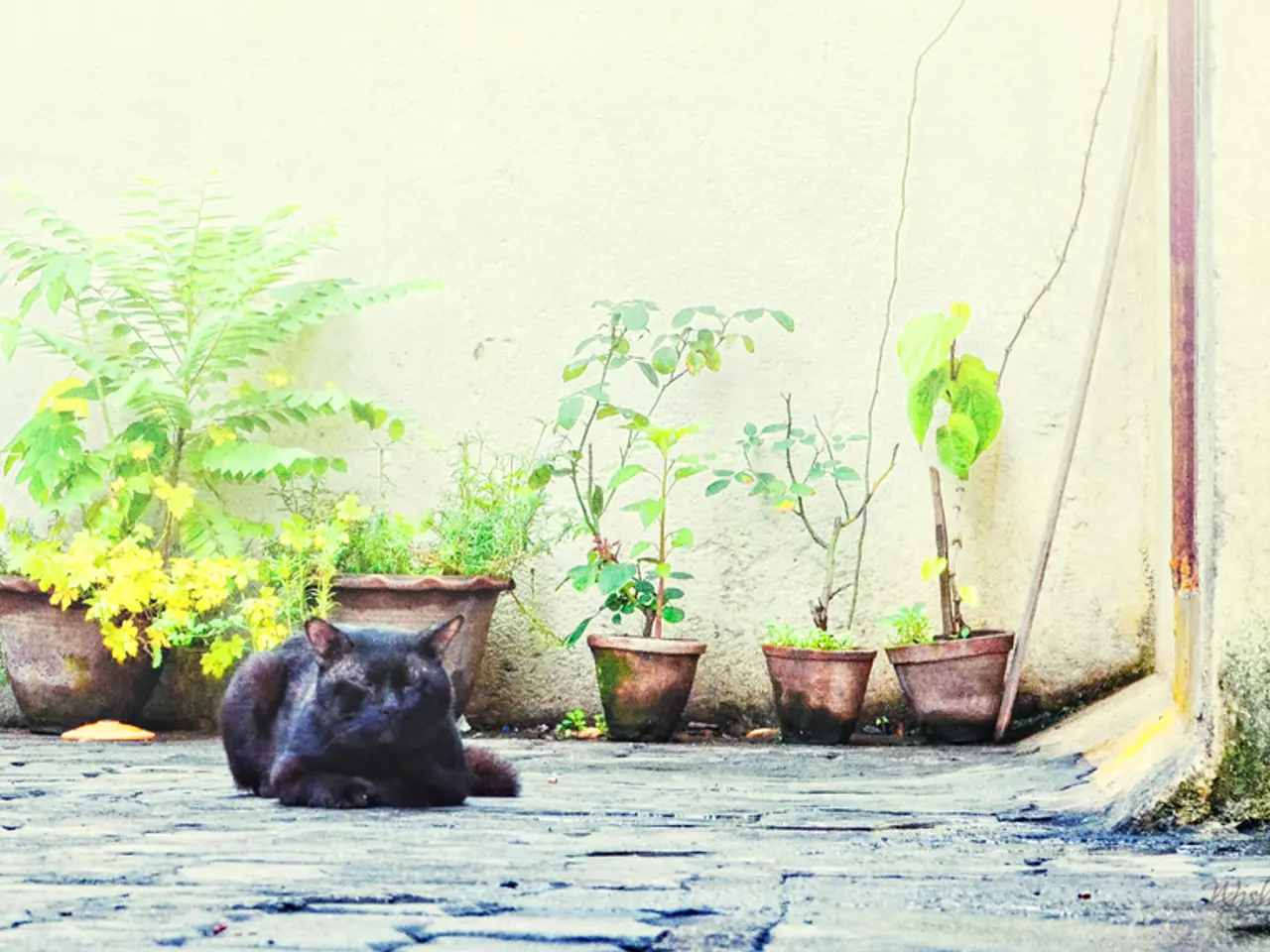Harmful flora for feline friends
Gardening can be a delightful pastime, but it's essential to consider the safety of our furry friends when choosing plants. Cats Protection, a UK-based charity dedicated to cat welfare, has identified several common garden plants that pose a threat to cats. Here's a rundown of the most toxic plants to avoid for a safer garden environment.
The Most Toxic Plants for Cats
- Lilies: Highly toxic, ingestion or even contact can lead to severe kidney failure. Even coming into contact with pollen or drinking water from a vase containing lilies can pose a risk[1][3].
- Sago Palm: Very harmful, with seeds being the most toxic. Consumption can cause serious poisoning or even death[1][3][4].
- Tulips and Hyacinths: Contain alkaloid toxins, mainly concentrated in bulbs. They can cause mild to moderate toxicity, resulting in vomiting or irritation[1].
- Begonia: Toxic if ingested, especially the underground tubers. They can cause oral irritation and other symptoms[1].
- Aloe Vera: Contains saponins that can cause vomiting, diarrhea, and dehydration in cats[1][3][4].
Other plants to watch out for include autumn crocus and peace lily, which are toxic to cats[1][4].
Safe Alternatives for Cat-Friendly Gardens
To ensure a safe garden for your cat, consider planting pet-friendly options such as spider plants, pepromias, certain palms (Areca or Parlor palm), and cat grass[2]. Growing cat-friendly plants like catnip, mint, cat thyme, and lavender can also encourage cats to nibble on non-toxic plants in the garden.
Preventing Cat Poisoning
To prevent cat poisoning, it's best to avoid having lily plants in the home, garden, or any environment where your cat roams. Clearing away clippings when gardening can also help avoid intriguing curious cats[5].
If you suspect your cat has eaten part of a toxic plant, seek veterinary advice immediately. During the Christmas season, be mindful of plants like mistletoe and poinsettia, which can cause symptoms such as drooling, upset stomach, difficulty walking, low blood pressure, seizures, and even death[6].
For a complete list of plants that have varying levels of toxicity to cats, see the Cats Protection factsheet[7]. By being vigilant about these common garden plants, you can help ensure a safer and healthier environment for your feline friends.
[1] Cats Protection: https://www.cats.org.uk/advice/pet-care/plants-poisonous-to-cats
[2] RSPCA: https://www.rspca.org.uk/adviceandwelfare/pets/smallanimals/plants
[3] Blue Cross: https://www.bluecross.org.uk/pet-advice/poisonous-plants-cats
[4] PDSA: https://www.pdsa.org.uk/pet-advice-and-information/pet-health-advice/poisonous-plants-for-cats
[5] Alison Richards, Cats Protection's Central Veterinary Officer, advises avoiding planting lilies in gardens with cats present due to their toxicity.
[6] Mistletoe poisoning: https://www.vets-now.com/pet-advice/christmas/mistletoe-toxicity-in-pets/
[7] For a complete list of plants that have varying levels of toxicity to cats, see the Cats Protection factsheet.
- To create a safe and enjoyable home-and-garden environment for both gardening enthusiasts and their feline companions, it's vital to plant cat-friendly options like spider plants, pepromias, and cat grass, while avoiding toxic plants such as lilies, sago palm, tulips, hyacinths, and aloe vera.
- By choosing pet-friendly plants and removing harmful ones from our home-and-garden lifestyle, we can ensure our cats remain healthier and safer, reducing the risk of poisoning incidents.




